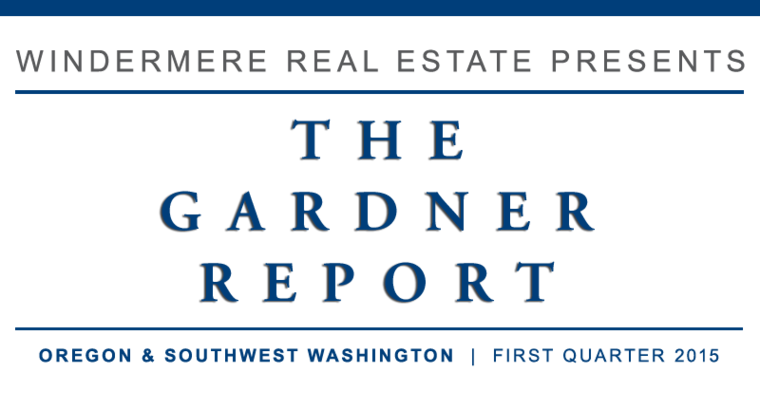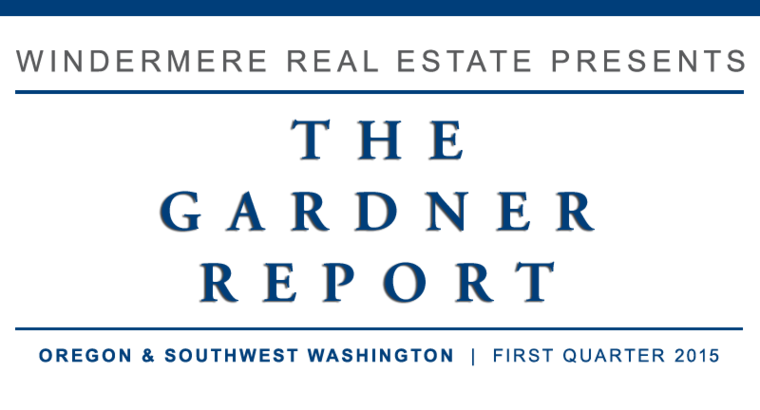
Windermere Real Estate is proud to partner with Gardner Economics on this analysis of the Oregon and Southwest Washington real estate market. We hope that this information may assist you with making better-informed real estate decisions.
Economic overview
From an economic perspective, I am pleased to see that employment continues to trend higher in Oregon and Southwest Washington. Additionally, there’s a considerable reduction in the number of long-term unemployed, and the number of layoffs is also dropping. We’re starting to see a growth in wages which will also help with the state’s overall economic growth.
Home sales activity
- First quarter had 10,269 home sales, which is an annual increase of 16.9%.
- Polk County saw the steepest increase in sales at almost 60%; however, the absolute increase was just 61 units.
- All but two counties in the region experienced double-digit percentage increases.
- Three counties saw a decline in home sales, but these are very small areas and the total loss was only 15 units.
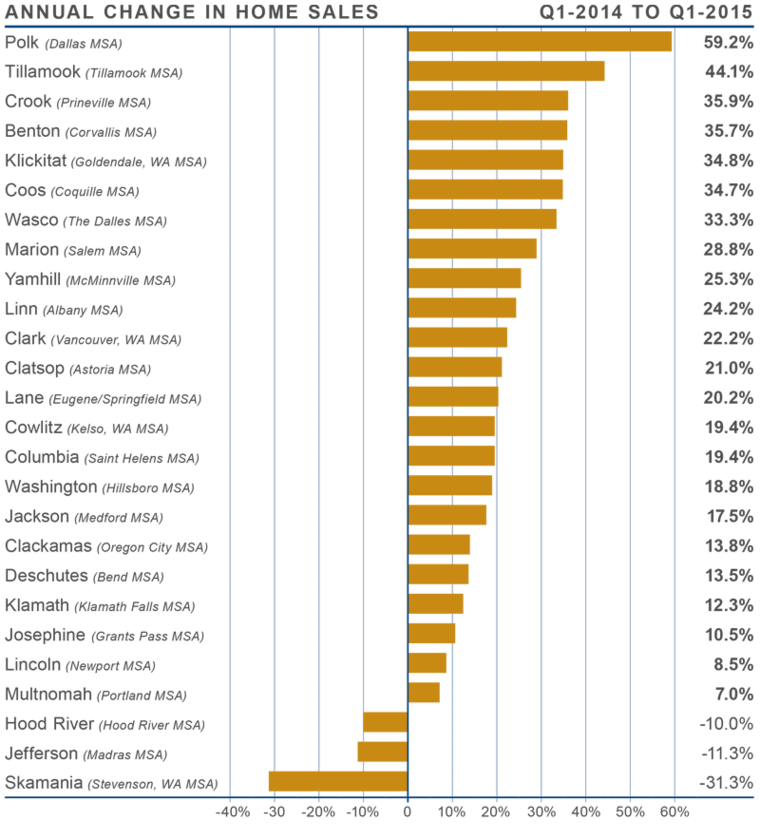
Home prices
- Year over year, the average home price in the region rose by 3.6% to $284,833.
- When compared to Q1 2014, Klickitat County had the strongest price growth of over 73%. This is attributable to the size of the market, which allows for substantial swings in price.
- All but three counties saw an annual gain in prices, with eight showing double-digit percentage gains.
- Prices fell in just three counties, but these are counties where relatively few transactions take place, so they are prone to extreme swings.
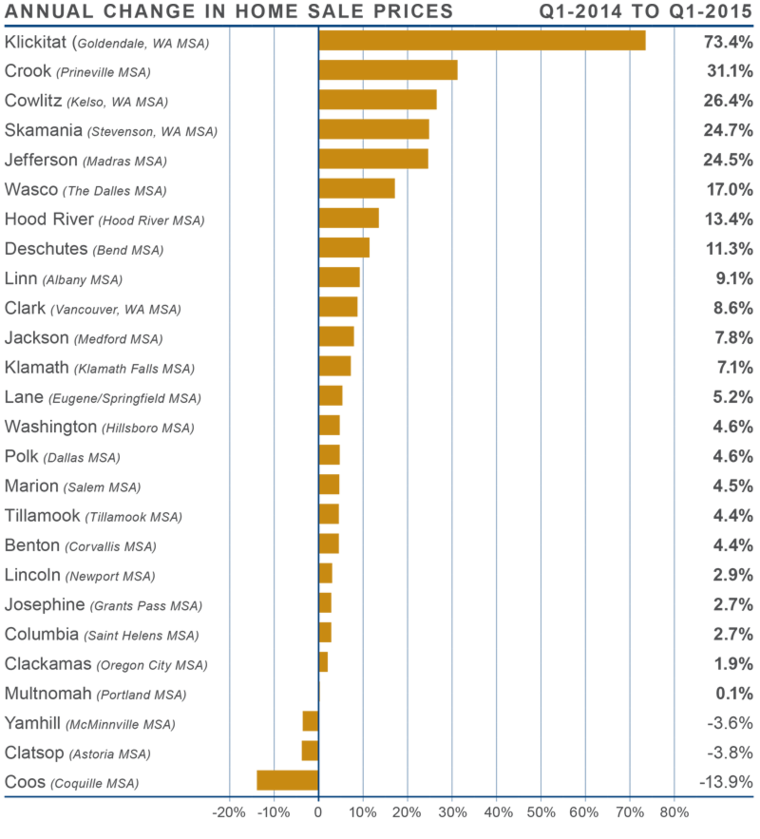
Days on market
- The average number of days it took to sell a home in the region dropped by 11 days when compared to the first quarter of 2014.
- On average, it took 122 days to sell a home in the region.
- There were a few markets where the length of time it takes to sell a home did rise, but the increases were still fairly modest and no cause for concern.
- With inventory levels as low as they are, the time it takes to sell a home will likely continue to fall.
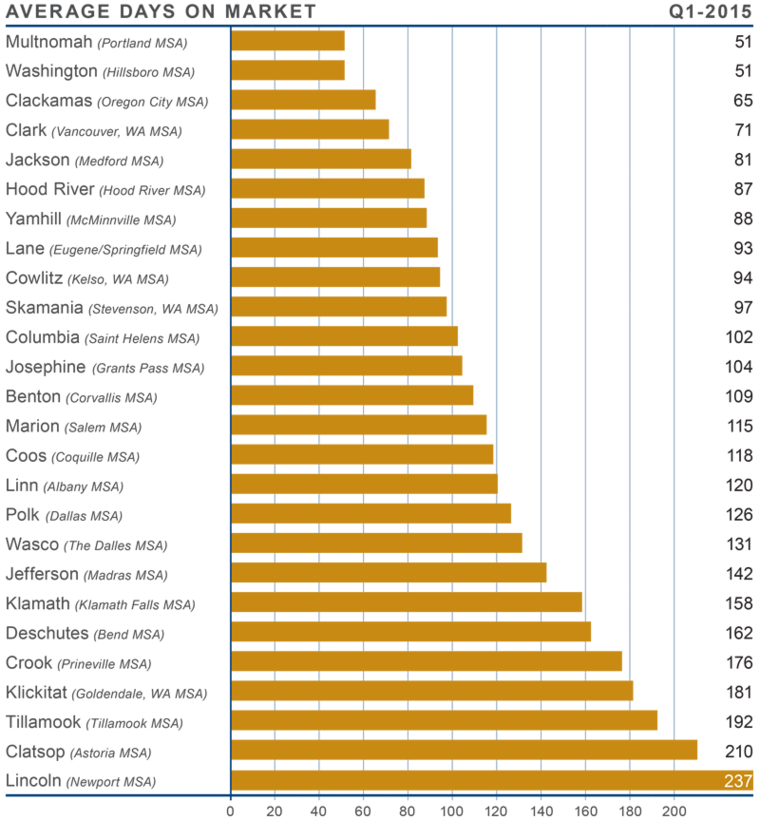
Conclusions
 This speedometer reflects the state of the region’s housing market using housing inventory, price gains, sales velocities, interest rates, and larger economic factors. As you can see, we are still very clearly in the midst of a seller’s market and, unless we see a significant increase in listings, it will remain that way for the foreseeable future.
This speedometer reflects the state of the region’s housing market using housing inventory, price gains, sales velocities, interest rates, and larger economic factors. As you can see, we are still very clearly in the midst of a seller’s market and, unless we see a significant increase in listings, it will remain that way for the foreseeable future.
The shortage of inventory, and subsequent competition for homes, has driven prices higher, but the rate of appreciation has slowed somewhat.
Interest rates are still at historic lows, and we expect that this will continue to be the case through 2015, which further favors conditions for home sellers. That said, obtaining a mortgage remains more difficult than it should be due to the ongoing implementation of the “qualified mortgage” rule which reduces access to financing to certain buyer segments.
To conclude, the region is in need of inventory and I hope that we will see a modest increase in listings as we move further into the late spring/early summer. Some are talking about the potential for another housing “bubble” given the lack of homes for sale and the bullishness of buyers in bidding up properties; however, I believe that there are sufficient safeguards in place so that we will not see this happen.
About Matthew Gardner
 Mr. Gardner is a land use economist and principal with Gardner Economics, considered by many to be the foremost real estate analysts in the Pacific Northwest. Over the past 25 years he has served on many industry-related panels and has been cited regularly in local and national media.
Mr. Gardner is a land use economist and principal with Gardner Economics, considered by many to be the foremost real estate analysts in the Pacific Northwest. Over the past 25 years he has served on many industry-related panels and has been cited regularly in local and national media.
 Facebook
Facebook
 X
X
 Pinterest
Pinterest
 Copy Link
Copy Link
